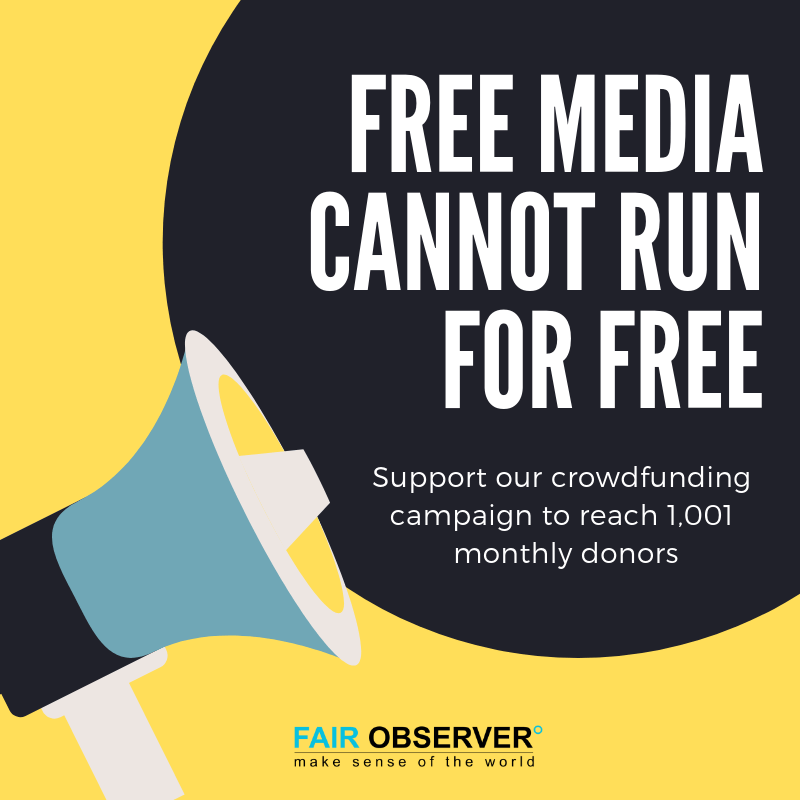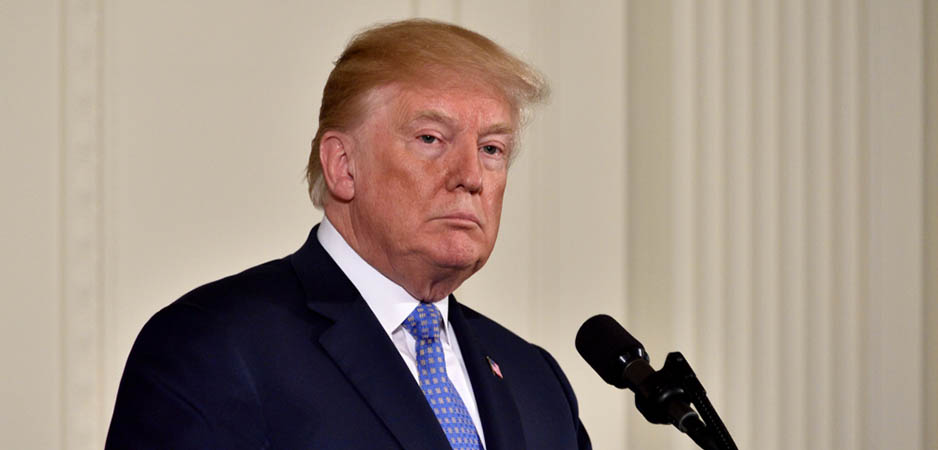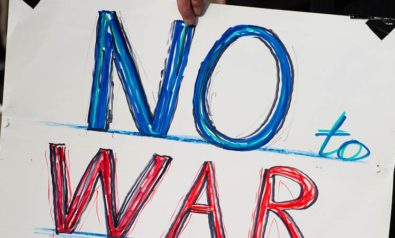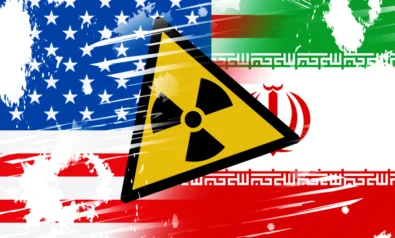The Trump administration remains seemingly undecided on what its goals on Iran really are.
Hostility between the United States and Iran has evolved ever since Washington withdrew from the Joint Comprehensive Plan of Action (JCPOA) — the nuclear deal agreed between the Iranians and the P5+1 group — in 2018. Most recently, it resulted in the cancellation of significant reduction exception (SRE) waivers for key trading partners vis-à-vis the purchase of Iranian crude.
It has become clear that the Trump administration is making good on its threats to pursue what it terms “maximum pressure” on the Islamic Republic. What is not clear, however, is whether there is anything resembling a coherent strategy undergirding these efforts. Although vague statements have been made regarding Iran’s status as a bad actor and the administration’s intention to curb its behavior, there is little strategic logic in America’s current approach. Moreover, the negative fallout, and the potential for escalation and unforeseen consequences, is substantial.
It has already become undeniable that America’s unilateral withdrawal from the JCPOA has, so far, been a net negative. Reservations about the framework in its current form notwithstanding, diplomatic agreements often serve as antecedents to future ones. The notion that a better deal in the future is made more likely by withdrawal from the framework — as opposed to working within it — is questionable at best. Moreover, vague and spurious claims that Iran is not abiding by the terms of the nuclear deal have not been supported by any public case, and skepticism of this claim has been bolstered by the International Atomic Energy Agency’s (IAEA) numerous verifications — 14 and counting — to the contrary.
For its troubles, all the US has secured with the withdrawal is a deterioration of its credibility with allies and adversaries alike. The IAEA, the UN and the European Union all remain behind the deal, and have not been provided any consistent justification for its abandonment by Washington. In addition to the damage to foreign relations, the resultant re-imposition of sanctions against Iran has caused a measure of economic inconvenience for allied economies not likely to engender trust or goodwill.
The Islamic Revolutionary Guard Corps
That said, while the thought process of the JCPOA withdrawal — renewed economic pressure — is clear enough, the rationale behind the recent designation of the Islamic Revolutionary Guard Corps (IRGC) as a terrorist organization remains opaque. Undoubtedly, the IRGC has long patronized terrorist organizations across the region, played a nebulous role in the US Embassy and Marine barracks bombings in Beirut in 1983, and supplied Shia militias with EFPs (explosively-formed penetrators) that killed hundreds of US soldiers during the Iraq War. But this designation, a response to nothing in particular, brings with it both questions and problems.
The IRGC already carried the more accurate “supporter of terrorism” designation, one that incurred heavy sanctions pressure. Given that all of America’s major allies, including the United Kingdom, have rejected the classification change, it begs the question: What is the desired result? The benefits are not apparent, and the clear absence of any diplomatic prep work has further isolated the US from its allies on the Iran issue.
The designation of a state institution such as the IRGC as a terror group also carries diplomatic and legal implications. Iran has already retaliated with the knee-jerk labeling of US Central Command (CENTCOM) as a terrorist organization. But the move also opens the US up to more substantial criticism. For instance, conversations could be introduced as to the “terroristic” nature of the CIA and CENTCOM’s operations in Syria, where messy liaisons with anti-regime forces have, at times, resulted in support for jihadist groups. Such conversations regarding military and intelligence organizations will have been, mutatis mutandis, validated by the precedence that Washington has set with the IRGC.
The IRGC designation also brings into question the Trump administration’s wider counterterrorism policy, particularly in light of its intention to designate the Muslim Brotherhood as a terrorist organization as well. The Brotherhood holds many illicit relationships and proffers an ideology inimical to Western liberalism, but its illogical and incongruous conflation to a terrorist organization undermines the clarity of such labels, particularly at a time when the Islamic State is on the march in Afghanistan, Sri Lanka, Saudi Arabia and the Democratic Republic of Congo.
This brings us to the revocation of SRE waivers for five trading partners — China, India, Japan, Turkey and South Korea — which, while a testament to the administration’s commitment to “maximum pressure,” is likely to cause chaotic operational inconsistencies in key national energy sectors. Indian refineries, for instance, are designed specifically for Iranian heavy sweet crude. For the Indians to supplant Iranian supply with light crude imports from Iraq or Saudi Arabia will be costly, especially at a time when such a disruption will likely result in increasing prices and a deceleration of growth.
While the capricious nature of America’s Iran policy has long grown tiresome for allies, it is undeniable that it has caused Tehran extreme economic pain. The Iranian riyal has crumbled since May 2018 and the economy has been wracked by inflation and recession, the results of which are beginning to be felt on the street.
Regime Change in Iran?
However, the question remains: What is the Trump administration’s strategic aim? The stated intention, according to Secretary of State Mike Pompeo, is “to deprive the outlaw regime of the funds it has used to destabilize the Middle East.” But to what end? Ostensibly, the end goal is to cause enough pain to drive the Iranians back to the negotiating table. But this is unrealistic. Iranian leaders — from President Hassan Rouhani to Quds Force commander Qassem Suleimani — have rejected that possibility outright, citing, inter alia, the inability of US diplomatic agreements to survive an election cycle. The Islamic Republic has endured sanctions for most of its 30-year existence. There is little evidence that economic hardship alone will break its will.
The other possible option is regime change, a desire that has been periodically hinted at by administration officials. Both Secretary Pompeo and National Security Adviser John Bolton have long been proponents of regime change, which can take the form of either the fomenting of an indigenous uprising or military intervention.
The former option has long been a pipe dream in Beltway circles with little chance of fruition. Despite the existence of Baluch and Kurdish resistance groups waging low-level guerrilla warfare, the regime faces no serious organized opposition inside the country. Moreover, even if it did, the Iranian security infrastructure is such that an Arab Spring-style uprising would have little chance of succeeding. Stated flatly, the US does not possess the ability to influence regime change from the inside.
The other option — military intervention — would be a catastrophe. While many view Washington’s machinations as an attempt to goad Tehran into flagrantly violating the JCPOA, paving the way for military strikes, this would likely result in either an inconclusive air campaign or an Iraq quagmire redux. Given the near-complete isolation that America suffers on the Iran issue, were the US to attack Iran, there would be short-term gains for Israel, Saudi Arabia and the United Arab Emirates, but little for Washington itself, other than the credibility that comes with following through on threats.
Nonetheless, this option is made more plausible by the unrealistic character of US demands, which would amount to Iran’s complete and total strategic capitulation. Short of war, the current course of action only serves to further isolate the United States and weaken its regional position. The Iranians, for their part, are well-placed to benefit from Washington’s lack of strategic coherence.
“Crucially, the administration remains seemingly undecided on what its goals really are. Tehran’s complete strategic capitulation? Unlikely. No rational state would cede to Washington’s list of demands.”
The IRGC terror designation served as a unifying gesture for most Iranians, who rallied behind the Islamic Revolutionary Guard Corps in a predictable episode of Persian nationalism. Even the Guards’ most vociferous critics among the Iranian reformists, such as vocal MP Mahmoud Sadeghi and reformist majority leader Mohammad Reza Aref, donned IRGC uniforms in solidarity with an organization still viewed by many Iranians as protectors of the nation.
This is indicative of a larger trend, which began in 2017 following President Donald Trump’s speech to the Arab Islamic American Summit in Riyadh, whereby rejectionist American policy serves to orient Iranian political inertia further and further in favor of the hardliners. President Rouhani, a reformist, staked his 2017 re-election on the JCPOA and the assertion that the conservatives were wrong about the duplicity of the “Great Satan.” The US withdrawal and subsequent courses of action have vindicated the IRGC-backed hardliners, all but guaranteeing conservative victories in the 2020 parliamentary elections, as well as the 2021 presidential contest.
This does not bode well for proponents of negotiations. The hardline approach to US pugnacity is to respond in kind, led by an emboldened IRGC benefiting from abnormally high levels of American-induced domestic support, and with the full backing of Ayatollah Ali Khamenei, the supreme leader of Iran. The recent promotion of the hawkish and militant General Hossain Salami as the new commander of the IRGC is a glaring indication that this is the intended course of action in Iran.
Regional Influence
Iran possesses sizeable influence in the Middle East, as well as extensive asymmetric warfare capabilities, which it can bring to bear in geopolitical contests in strategic chokepoints like Iraq. Baghdad has expressed great consternation at the Trump administration’s Iran policy, and Iraq has sought to continue fostering closer economic and political ties with the Iranians in the face of US pressure. Prime Minister Adil Abdul-Mahdi’s recent visit to Tehran resulted in commitments to increase bilateral trade to $20 billion over the next several years, as well as to pursue the coordinated development of shared oil fields. Moreover, Tehran wields immense influence in the Shia south — where most Iraqi oil fields are located — and with key political figures such as Hadi al-Ameri. The proximal realities of Iraq’s need for economic, political and military relationships with Iran cannot be, in the long term, contested by Washington.
Moreover, the tactical implications of the IRGC’s sprawling network of proxies across the region are severe. Chief among this network is of course Lebanon’s Hezbollah, but there are also Iraqi groups, including Asaib Ahl al-Haq, Kataib Hezbullah, Hezbollah al-Nujaba and Ameri’s powerful Badr Organization. Not only do these groups provide Iran with valuable leverage in Iraq, but they also play an important role in Syria, where Lebanese Hezbollah and the IRGC maintain a sizeable footprint, and where the Iranians, along with their Russian patron, have secured victory. Then of course, there is the IRGC’s alliance with the Houthi rebels in Yemen, support to whom has manifested itself in, inter alia, the employment of drones against the Saudi military in the country.
Any of these assets could be used to target US interests or personnel. Indeed, there have already been hints that American contractors, diplomats and intelligence officers could become targets. Moreover, the US has little recourse to respond in kind; it cannot match Iran on the asymmetric battlefield and would be forced to choose between conventional military action or inaction.
There is broad speculation that the Iranians could close the Strait of Hormuz in response to the SRE revocation or if they are prevented from using it themselves. The effects of this possibility can be overstated as the US Fifth Fleet, as well elements of the British or French navies, could open and secure a sea lane without much trouble. However, the threat of military confrontation over control of the strait is omnipresent, and even a temporary disruption of supply lanes will negatively impact oil prices.
 Iran’s ability to attack the international energy economy does not stop there. If additional financial sanctions are placed on the regime, Tehran could respond via cyberwarfare, attacking energy infrastructure throughout the Arabian Peninsula. More kinetically, Iran could threaten to attack the Abqaiq plants in eastern Saudi Arabia in order to ward off a conventional strike, or else make good on a threat in retaliation for US military action. It is unlikely that Saudi missile defense could fully deter such a strike, which would have devastating effects on the global economy.
Iran’s ability to attack the international energy economy does not stop there. If additional financial sanctions are placed on the regime, Tehran could respond via cyberwarfare, attacking energy infrastructure throughout the Arabian Peninsula. More kinetically, Iran could threaten to attack the Abqaiq plants in eastern Saudi Arabia in order to ward off a conventional strike, or else make good on a threat in retaliation for US military action. It is unlikely that Saudi missile defense could fully deter such a strike, which would have devastating effects on the global economy.
Is There a Plan?
Ultimately, the Trump administration’s Iran strategy is all stick and no carrot, which is incoherent if one’s goal is diplomatic settlement and not military conflict. Iran will most likely limp along, as it is no stranger to economic isolation and sanctions-induced hardship. But it is unlikely that the US will be able to achieve its goal of zero exports; there has long been an undeclared oil economy, and these undeclared exports will continue to slip through. Iran has already signaled its intent to continue to export oil in the so-called “gray market.”
Although the SRE holders will likely comply with their revocation in the short term, American strong-arming may prompt medium- and long-term reevaluation. Turkey’s current financial conditions are poor, and this will further complicate matters. China is Iran’s largest importer, and while it will likely prioritize the success of US trade talks over Iranian crude, Iran remains an important part of Beijing’s Belt and Road Initiative (BRI), and this episode will create conditions for closer strategic alignment in the future. Even now, the shaky status of the trade talks and continued US threats to impose tariffs may result in a more defiant China on the Iran issue. This, in turn, could embolden Turkey — in desperate need of Iranian crude — to do the same.
Russia will also benefit in the near term, by taking up the slack on exports for Turkey and potentially China, a welcome infusion of capital for the strength of the ruble. Perhaps more importantly, increased American bellicosity toward Iran has positioned Russia as a potential mediator between the two parties. That this scenario is a possibility is testament to the ways in which the Trump administration has relegated the US to a Gulf-Sunni patron, seeming to suborn itself to the parochial objectives of regional allies, rather than pursue goals in support of the myriad competing and interconnected interests of a global superpower.
Under President Trump, the US position in the Middle East has grown increasingly tenuous, due in large part to nakedly one-sided actions in favor of Israel and Saudi Arabia — self-satisfying in the short term, but missteps that serve to allay the chessboard against long-term American influence.
The prospect of a US-led peace process between the Israelis and Palestinian has seldom been less possible. Abrupt, unprecedented moves such as the relocation of the US Embassy to Jerusalem and the recognition of Israeli sovereignty over the occupied Golan Heights (which under international law belong to Syria) have all but guaranteed the death of America’s already moribund credibility on the Arab street. A hasty withdrawal from Syria has served Iran and Russia a crucial strategic victory (even if it may ultimately be relinquishing a burden). The absence of US leadership in the Yemeni War has resulted in a perception of both incompetence and callous indifference. Finally, America’s Iran policy has created tangible benefits for its great power rivals and isolated it from all of its allies except, predictably, Israel and the Gulf states.
There is a danger that the consequential mix of anti-Iran militarism and the president’s own transactional approach to foreign policy may pave the way for another Gulf war. The “maximum pressure” stratagem leaves little room for alternatives if Iran does not capitulate unconditionally. While the deployment of a carrier task group and bomber strike force to the Gulf is meant as a message to Tehran, the approach is not likely to foster stability. Indeed, Bolton’s assertion that Iran will be met with “unrelenting force” not just in response to actions by the Iranian military or the IRGC, but also by Iran’s proxies, raises the possibility of a misunderstanding, where an overzealous Iranian client could drag the US into a military conflict.
Crucially, the administration remains seemingly undecided on what its goals really are. Tehran’s complete strategic capitulation? Unlikely. No rational state would cede to Washington’s list of demands. Internal regime change? Also, unlikely. There are no indications that the conditions for an uprising are even remotely present. Ultimately, though the Trump administration claims it wants to avoid war, it has not presented itself with any realistic alternatives.
*[Gulf State Analytics is a partner institution of Fair Observer.]
The views expressed in this article are the author’s own and do not necessarily reflect Fair Observer’s editorial policy.
Support Fair Observer
We rely on your support for our independence, diversity and quality.
For more than 10 years, Fair Observer has been free, fair and independent. No billionaire owns us, no advertisers control us. We are a reader-supported nonprofit. Unlike many other publications, we keep our content free for readers regardless of where they live or whether they can afford to pay. We have no paywalls and no ads.
In the post-truth era of fake news, echo chambers and filter bubbles, we publish a plurality of perspectives from around the world. Anyone can publish with us, but everyone goes through a rigorous editorial process. So, you get fact-checked, well-reasoned content instead of noise.
We publish 2,500+ voices from 90+ countries. We also conduct education and training programs
on subjects ranging from digital media and journalism to writing and critical thinking. This
doesn’t come cheap. Servers, editors, trainers and web developers cost
money.
Please consider supporting us on a regular basis as a recurring donor or a
sustaining member.
Will you support FO’s journalism?
We rely on your support for our independence, diversity and quality.














